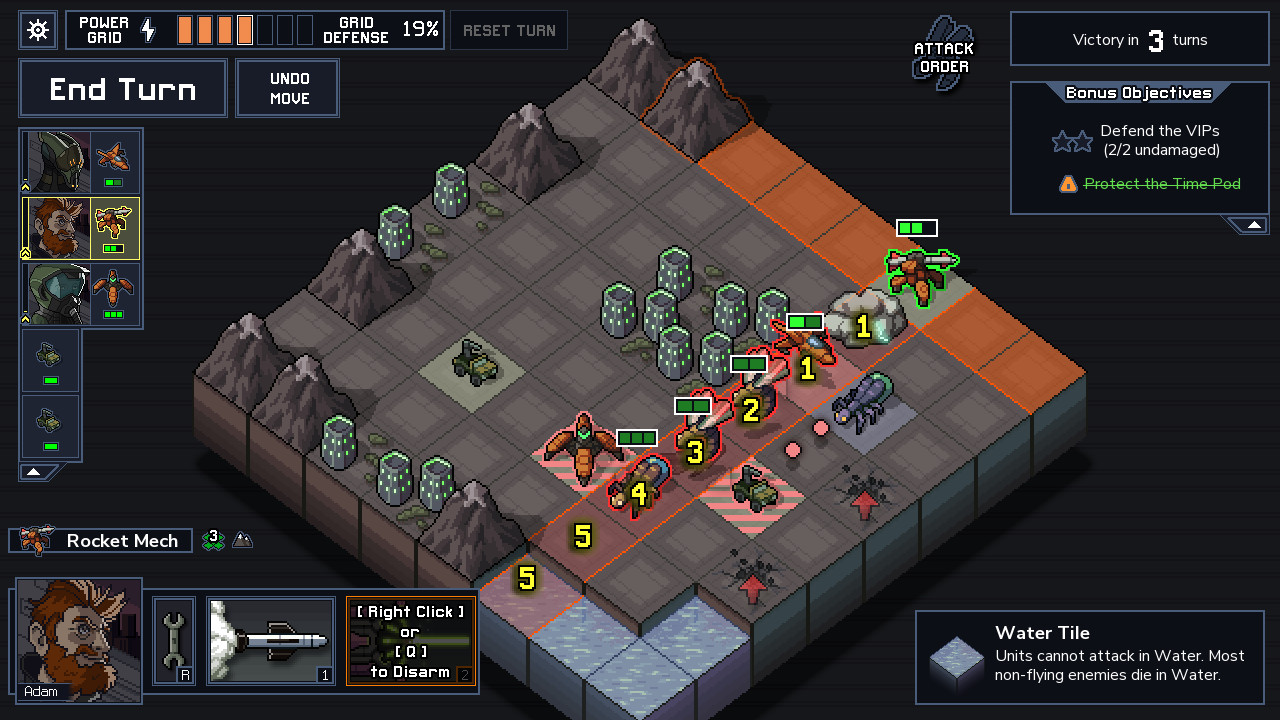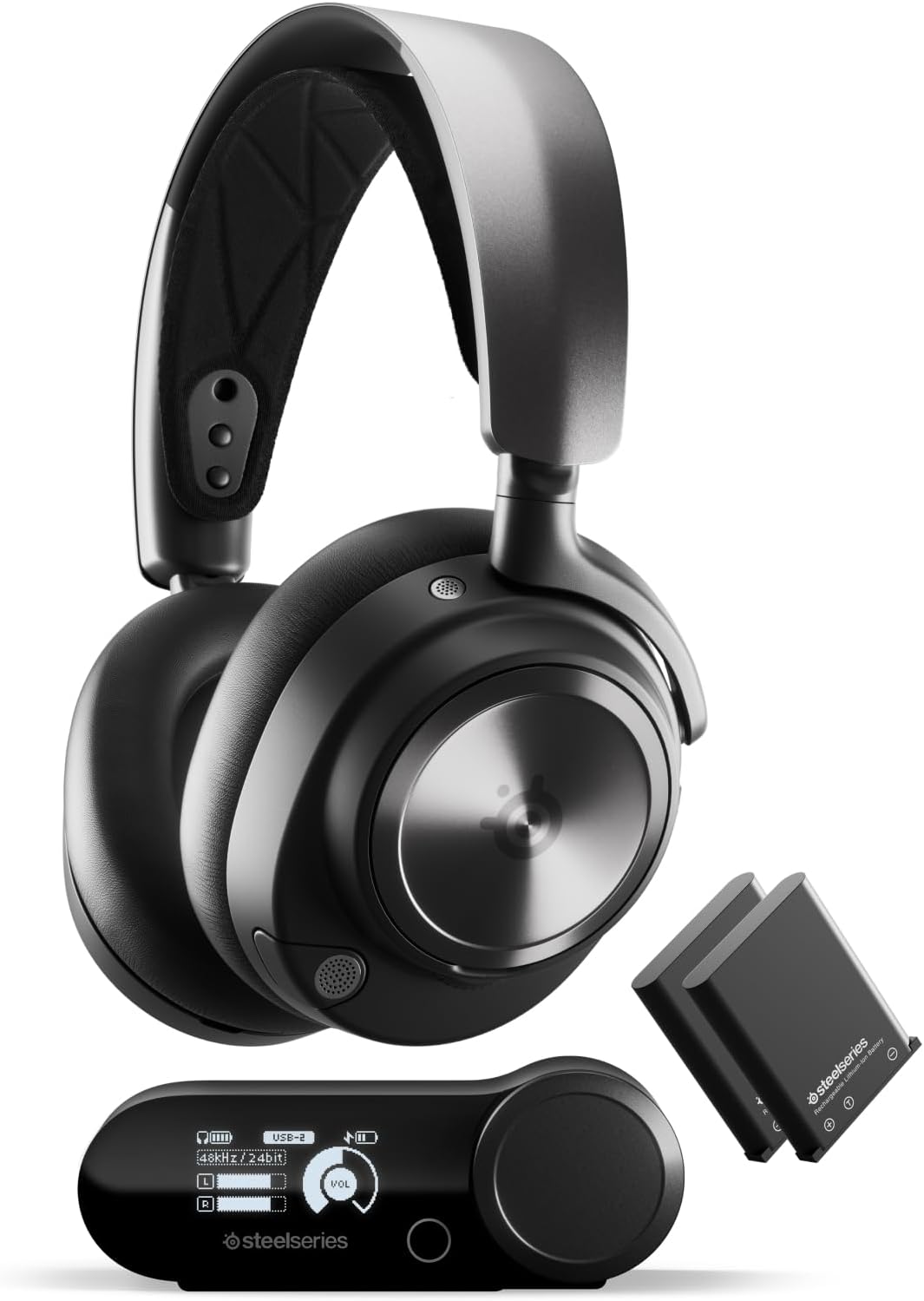Let me share something with you about the idea of “winning.” For years, I thought I understood it, especially in strategy games. It meant having the biggest fleet, the most powerful units, the most resources. It meant systematically erasing my opponent until only my color remained on the map. Winning was about dominance. It was loud, explosive, and final. And then I played Into the Breach, and it quietly, brilliantly, took a sledgehammer to that entire worldview.
This game, with its simple 8×8 grid and charming pixel art, isn’t about the triumphant feeling of conquest. It’s a deep, often painful, exploration of a much more potent and realistic concept: survival. It strips away the power fantasy and forces you into the role of a guardian, not a conqueror. It’s a game that redefines success not by what you destroy, but by what you manage to save against impossible odds. It fundamentally changed how I approach strategy, and I want to walk you through how it does it, because the lessons it teaches are profound.
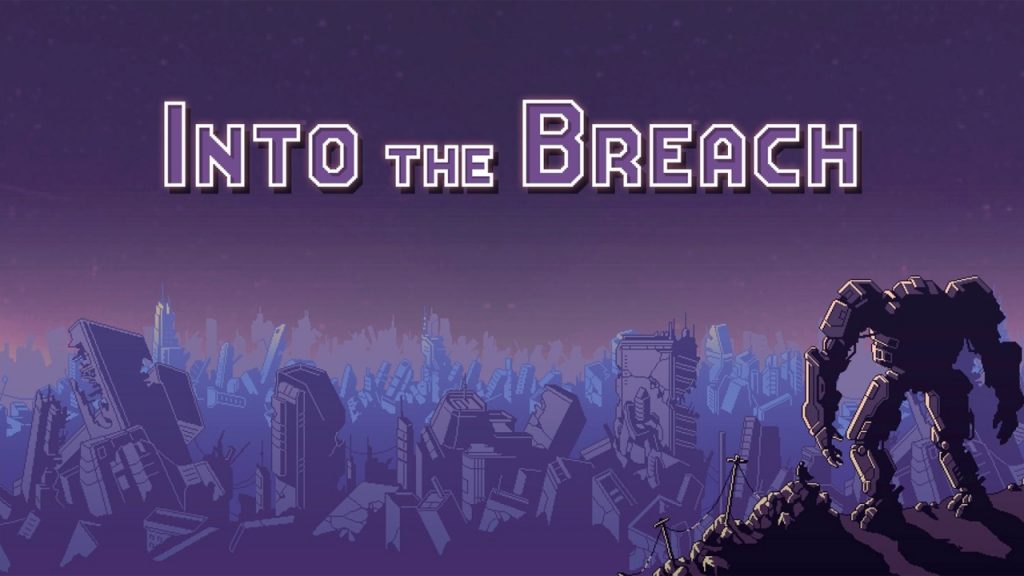
The Tyranny of the Perfect Turn: Escaping the Perfectionist Trap
The first thing Into the Breach did was break my brain with a beautiful lie. The game gives you “perfect information”—at the start of your turn, you see exactly what every single enemy, the Vek, is going to do. You see who they’re targeting, how much damage they’ll do, everything. My mind immediately went into overdrive. I thought, “It’s a puzzle! There must be a perfect solution.” I would spend minutes, sometimes ten or more, staring at the screen, trying to find that one flawless sequence of moves where I could kill every Vek, save every building, and keep my mechs pristine.
That quest for the perfect turn was torture, because most of the time, it simply doesn’t exist. The game is a master of giving you four problems when you only have three solutions. There’s a monster about to destroy a hospital, another about to web your best mech, and a third poised to smash a power plant. You can’t fix it all. And trying to leads to a kind of analysis paralysis that makes you feel like a failure.
This is where the first lesson clicks into place. You have to let go of perfection. You have to stop looking for the best move and start training your brain to identify the least bad move.
How I Learned to Think: The Triage Mindset
I had to start thinking like an emergency room doctor, not a chess grandmaster. It’s not about a beautiful, elegant victory; it’s about stopping the bleeding long enough for the patient to survive.
Let me paint a picture for you: My Combat Mech is standing next to a Vek that’s about to attack a building with two civilians inside. Destroying that building means losing two points from my Grid—my timeline’s overall health. On the other side of the board, another Vek is about to hit an empty building, but the blast will also damage my Science Mech. For a long time, I would freeze in this situation. How do I save the civilians and my mech? The answer is, you don’t. The real question is, what loss can you afford? Mech health is a resource that gets refilled. The Grid is your lifeblood. Once it’s gone, it’s gone. The “least bad” move is to accept the damage to your mech. I learned to grit my teeth, punch the Vek threatening the civilians, and watch my other mech take the hit. It felt wrong at first, but it was the right call. It was a successful transaction, not a partial failure.
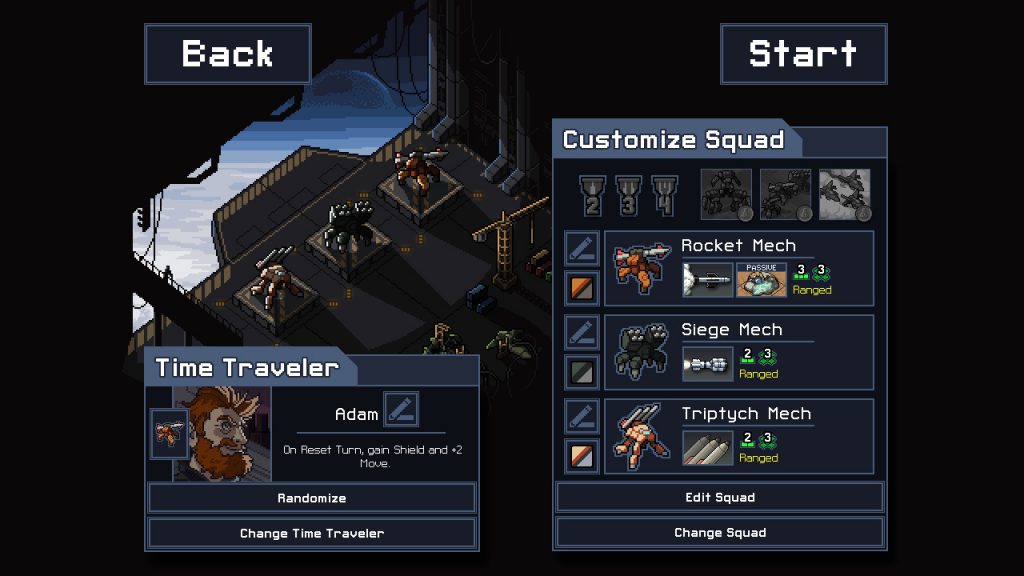
Redefining the Enemy: The Vek as a Force of Nature
Here’s the next paradigm shift I had to make: the Vek aren’t an army. It’s so tempting to think of them as intelligent enemies you need to outsmart. But they aren’t. They’re better understood as a natural disaster.
Think about it. Their actions are telegraphed and completely predictable. They are a series of incoming meteor strikes, a predictable earthquake, a rising flood. You can’t out-think a flood. You can’t intimidate an asteroid. You can only react to the physical reality of its impact. This realization changed my entire perception of my mechs. They stopped being just weapons and became something more like advanced disaster management tools. My job wasn’t to kill them all; it was to redirect the disaster.
My New Job Title: System Operator
My thinking had to evolve from “How do I kill these things?” to “How do I manipulate the entire system to make their turn pointless?” The board, the Vek, their attacks, and my mechs—it’s all one big physics engine. I’m just the operator.
I’ll never forget the first time this truly clicked: I was using the Steel Judoka squad, whose Judo Mech has this seemingly weak throw attack. An Alpha-level monster was about to obliterate a building holding a precious power core. Hitting it with my other mechs would barely scratch it. But then I looked at the whole board. I saw that another, smaller Vek was standing on the opposite side of the Alpha. Instead of trying to damage the Alpha, I moved my Judo Mech in, threw the Alpha over its shoulder, and watched it sail through the air to land directly on top of the smaller Vek. They both instantly exploded into a shower of purple goo. I had used the enemy’s own positioning to solve two problems with one, non-damaging move. That’s when I knew I was starting to get it. I wasn’t fighting a war; I was redirecting a catastrophe.
The Currency of Success: Why Grid Power is Your Only True Health Bar
In this game, you’re juggling a lot of numbers: your mechs’ health, your pilots’ experience points, and your Grid Power. At first, I was pathologically protective of my pilots and their mechs. They were my guys. I’d put them in harm’s way for nothing. This is a sentimental mistake the game punishes you for, brutally and efficiently.
I had to learn the hard way that almost everything is expendable. Mech health gets fully repaired after you complete an island. Pilots, as much as you love them, can be replaced. But Grid Power is the only thing that’s permanent. Every point you lose is a step closer to total failure for that timeline. When it hits zero, it’s over. That means the Grid isn’t just a score. It is your real health bar. Every decision you make has to be filtered through that truth.
The Question I Now Ask Every Turn
Before I make a single move, I ask myself: “What is the net effect on the Grid?” That’s it. That one question cuts through all the noise. An action that saves one point of Grid is infinitely more valuable than an action that saves a mech from taking five points of damage.
Here’s a gut-wrenching choice the game constantly gives you: It’s the last turn. A massive Vek is about to smash a building, costing you two Grid Power and failing a mission objective. Your favorite pilot, a max-level veteran with amazing skills, is the only one who can stop it. But to do so, he has to take a hit from another Vek that will kill him instantly. The alternative is to move him to safety and watch the building crumble. My old self would have saved the pilot. The person who has learned from Into the Breach makes the hard choice. I sacrifice my pilot. It hurts. The screen flashes with his portrait and a “PILOT KILLED” notification. But in exchange for that one, painful loss, I saved two Grid Power and gained a reward that will make the entire rest of the campaign stronger. I learned to see my pilots not just as heroes, but as assets to be spent wisely for the survival of the world.
The Strategic Art of Sacrifice: When Losing is a Winning Move
This brings us to the most difficult, and most rewarding, lesson the game has to offer: sometimes, losing is the best possible move you can make. I’m not talking about making a mistake. I’m talking about the deliberate, calculated, intentional sacrifice of one of your own units to achieve a greater good. It feels completely counter-intuitive, but it’s the peak of strategic thinking in this game.
You have to learn to look at your beloved mechs and pilots with the cold, detached eye of a general who knows that some soldiers won’t be coming home. You have to weigh their value in the moment and decide if they are worth more as a living unit or as a temporary shield.
The Calculus of the Body Block
This is a move you’ll come to respect and even admire. The “body block.” Imagine this: A Vek Leader, a true behemoth, is powering up an attack that will hit three buildings at once. If this goes off, you’ll lose five Grid Power. The timeline is over. You have no attacks that can kill it or even move it this turn. But your Prime Mech, with a rookie pilot inside, can reach the impact zone. He can’t shoot, he can’t punch, he can only move.
The winning move is to walk him right into the line of fire. He stands there, a lone hero, and takes the full force of the blast. The mech explodes. The pilot is gone. It feels like a devastating blow. But then you look past the wreckage. The three buildings are pristine. The Grid is safe. You just traded one piece to save the entire game. In that moment, losing your most powerful mech was the single greatest victory you could have achieved.
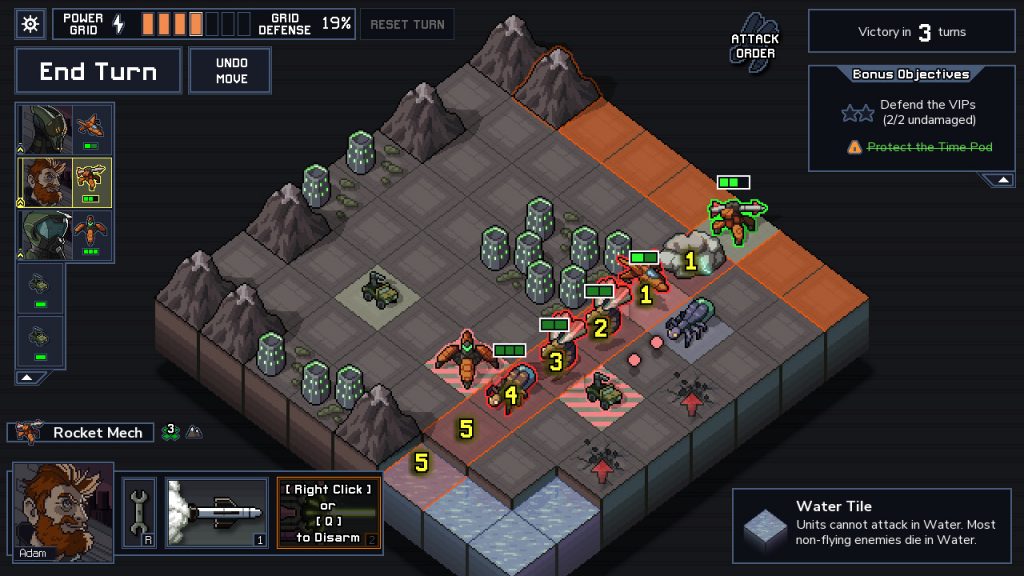
Control, Not Annihilation: Mastering the Board State
My entire approach to the game leveled up when I finally shed the obsession with killing everything. I saw a health bar, and my gamer brain screamed “Empty it!” But Into the Breach whispers a smarter way. The real goal is control. A living Vek that’s on fire and standing in a pool of acid is no longer a threat this turn. A Vek that you pushed into the path of another Vek’s attack is a solution, not a problem.
The most satisfying turns are often the ones where you barely do any damage. Instead, you’ve spent your actions pushing, pulling, shielding, and freezing. You’ve manipulated the board state so perfectly that the enemy’s entire turn whiffs completely. They attack mountains, they hit each other, they drown in the sea. You didn’t annihilate them. You made them irrelevant.
Conducting the Symphony of Chaos
I started to see the grid as a complex machine, and my moves were the levers. I wasn’t a brawler anymore; I was a systems engineer, fine-tuning the inputs to guarantee a safe output.
Let me give you an example of this beautiful chaos: I was using a squad that could create environmental hazards. A huge Spider monster was about to create a nest of new enemies, while another flying Vek was targeting a building. Instead of attacking either, I had my Leap Mech jump behind the Spider. The impact of its landing created a shockwave that pushed the Spider one tile forward—right into the path of the flying Vek’s attack. The flyer then took its turn and killed the Spider for me. All I had to do was nudge it into the right spot. It’s an intricate dance of cause and effect, and when you pull it off, it’s infinitely more satisfying than just blasting everything in sight.
The Timeline as a Teacher: Embracing the Meta-Loop
Now, here’s the most mind-bending part of it all. When you lose, when your Grid finally hits zero, the game doesn’t just say “Game Over.” It says the timeline is lost. And then it offers you a choice: send one of your surviving pilots back through time to a new reality, a new timeline, to try again. That pilot keeps all their skills and experience.
This one mechanic changes everything about failure. Losing is no longer a frustrating end. It’s a learning experience that is literally built into the story. The real game isn’t just about saving one world. The real game is about you, the player, becoming a better commander by learning from your countless failures.
Why I Now Welcome Failure
Honestly, my most valuable runs have been my most crushing defeats. I treat every lost timeline as a data-gathering mission. Why did I lose? Was I overwhelmed by flying enemies? Did I not prioritize enemies that spawn more Vek? Did I get too greedy going for a difficult objective?
I remember one run where I was just annihilated by a specific enemy combo on the second island. It felt awful. But I sent my pilot back. On the next run, when I was given a choice of which island to tackle, I knew exactly which one to avoid. When a certain weapon appeared in a shop, I bought it instantly, because I knew from my last failure that it was the perfect counter to the enemies that were coming. I wasn’t just playing the game anymore. I was playing with foresight. That failed timeline wasn’t a waste of an hour. It was the training I needed to eventually succeed.
Playing Into the Breach genuinely shifted how I think about strategy. It’s a game that argues, compellingly, that success is often quiet. It’s resilient. It’s about knowing what you can afford to lose. It’s about the elegance of control over the brute force of destruction. It forces you to make hard, pragmatic choices and to understand that a calculated sacrifice can be the most heroic move of all. The harsh but fair logic of its tiny grid leaves a permanent mark, offering a powerful new lens through which to view what it really means to come out ahead when facing impossible odds.
